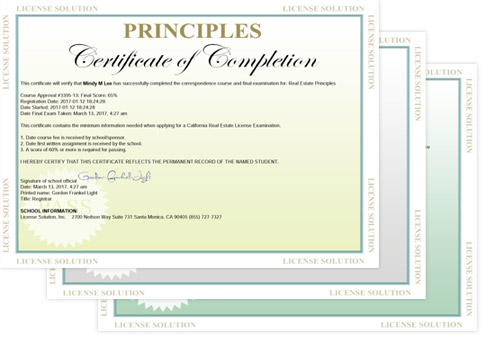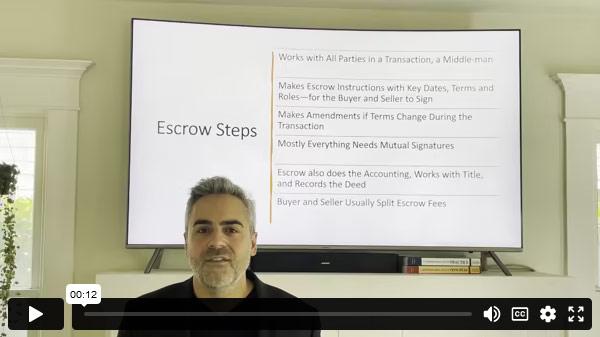Your real estate license can be a future career asset as technology improves home building. While the evolution of 3D printed homes gains momentum, housing prices may decrease and become more affordable for many people throughout California. This could lead to a substantial advantage for real estate agents.
Technological advances have grown at a compounded rate as we move forward through the 21st century. While many consumers today are well aware of the truly revolutionary designs in high tech world as seen with fancy smartphones, digital tablets, and impressive new car designs, there are people working in the home construction sector who are also working towards modernizing how homes are built and sold at a much faster pace. The home construction business has been rather slow to make significant changes in the real estate development industry over the past several decades. However, the introduction of 3D printing technology may soon change how quickly that homes will be designed, built, and sold to buyers.
What is 3D Printing?
The 3D (or three dimensional) technology is a process of designing and developing three dimensional objects from a single digital file that first starts as a 3D computer model. The computer file used by the 3D designer is usually some type of a CAD (Computer Aided Design) file. The selected 3D model could be created from the ground up with 3D modeling software, or built from data generated with some type of 3D scanner. It’s the 3D scanner device that allows businesses to create almost an exact replica or “clone” of the targeted object.
The 3D process is also referred to as a type of “additive manufacturing” that moves imagined objects from the virtual world to the real world. When most people think of an early form of 3D printing, they are most likely to visualize an old copy machine found at their office or school. Just like with a copy machine, an object is “copied” from a computer system before it is later built as a physical object that may range is size from a small toy to a rather large 2,000 square foot home.
Sculpteo (www.sculpteo.com), one of the largest 3D printing firms in the world, reported that their use of 3D printing in the first half of 2017 in various industrial sectors was broken down as follows:
- Consumer Goods – 17%
- Industrial Goods – 17%
- High Tech – 13%
- Services – 9%
- Healthcare sectors – 7%
The additive process technique that is used in 3D printing includes the laying down of successive layers of material until the object that is virtually imagined on a computer screen is later fully designed as a physical object. Each of these individual layers of materials might be seen as a thinly sliced horizontal cross-section of the finished product. Unlike the traditional “subtractive manufacturing” process (the cutting or hollowing out of material) to build something new, the 3D design is almost the exact opposite strategy partly since no raw material is used or damaged during the design process.
3D Printed Homes
Earlier this year, a company named Icon (https://www.iconbuild.com/), a construction technologies company, made the claim that they built the very first new 3D-printed home in the Austin, Texas region that received approved building permits. Executives from this very same Icon company have stated that they can create the bulk of a detached single-family home in less than 24 hours for as low as $4,000. Shortly thereafter, there will be numerous construction workers or subcontractors who may be needed to complete the interior flooring, add appliances, install window, and finish up the roofing design that will drive up the costs even higher.
“It’s our mission at ICON to re-imagine the approach to home building and construction and make affordable, dignified housing available to everyone throughout the world,” ICON Co-Founder and CEO Jason Ballard was quoted as saying.
https://www.youtube.com/watch?v=wCzS2FZoB-I
3D-Printed Home Can Be Constructed For Under $4,000
D.R. Horton, America’s #1 ranked home builder by construction and sales volume since 2002, was so impressed by Icon’s 3D home printing design process that they also invested their own funds as additional seed capital to expand Icon’s business model. The fact that the largest residential home construction company in the U.S. just invested a significant amount of their own money into the expansion of 3D printing technology for new homes may be a positive sign for improving the affordability of homes for new buyers. D.R. Horton is also consistently one of the largest home builders in both Southern California and Northern California.
A few of the main reasons why the cost to build new homes in California is so much higher than most other regions is that land costs are generally fairly high and the construction permit costs can be incredibly high, especially near downtown metropolitan regions like San Diego, Los Angeles, or San Francisco. A true irony is that real estate developers can be hit with numerous types of environmental impact or “housing affordability” fees that actually drive the home construction fees skyward by as much as $50,000 to $60,000+ per home even if the finished home was originally priced at $300,000 or $400,000. As a result, builders today don’t have much financial incentive to build affordable homes because they might actually lose money if they had to pay all of the permit fees required for the construction of each property.
California has almost 40 million residents as of 2018. Yet, only about 5% of all of the state’s land has any occupants on it partly due to factors such as lack of access to water, electrical, gas, and cable utility hookups, insufficient roads nearby, or the fact that so much of the state is protected by way of California or federal agencies (e.g., national parks). If a new home can be built for $4,000, $20,000, or even $50,000 after adding top- of-the-line appliances, window coverings, a new roof, and landscaping, then this would still be much cheaper for builders than a home that cost $100 per square foot to build ($100/sq. ft. x 2,000 sq. ft. home = $200,000 plus land and permit costs).
Will 3D printed homes harm or hurt existing home prices in California or elsewhere? Why buy an older $1 million dollar home when a brand new one may be designed and built for less than $50,000 to $100,000 after factoring in all of the extra hard and soft costs such as permit fees? Will it positively impact the staggering homeless crisis in California, especially? Only time will tell if 3D printed homes may provide more housing opportunities for people as well as new business opportunities for real estate agents.











